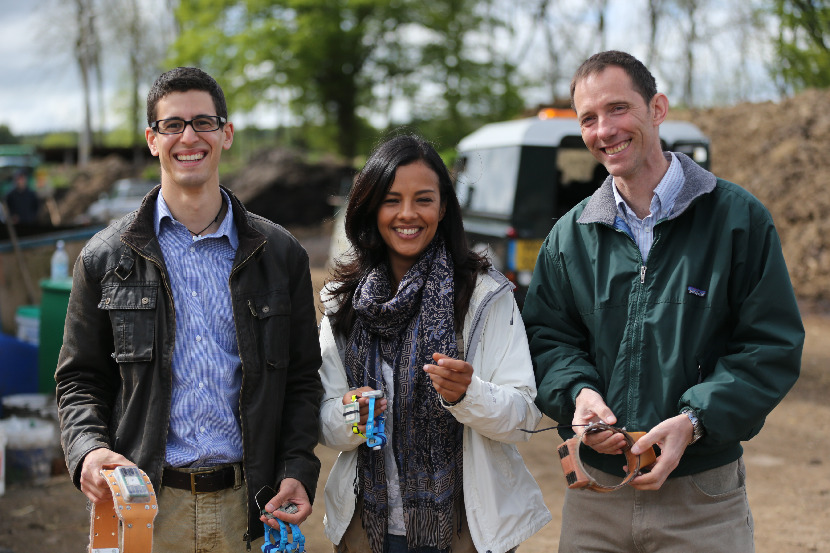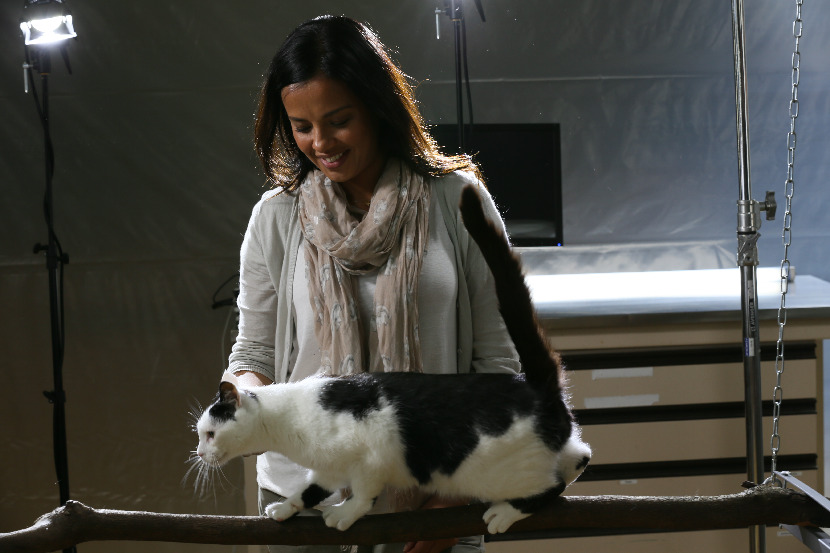RVC join forces with BBC for Cat Watch 2014
The RVC Structure and Motion Lab team have joined up with the BBC and presenter Liz Bonnin for Cat Watch 2014 on BBC2 Horizon, October 7th, 8th and 9th.
See our scientists revealing how town cats, village cats and farm cats spend their days and nights, and how cats use their incredible senses and agility to hunt.
Professor Alan Wilson and his team developed the wildlife collar tracking technology for their research into hunting behaviour by wild cheetahs, lions and leopards in southern Africa. For Britain's cats the collars had to be miniaturised so they could be carried comfortably without affecting the cats' behaviour. Collars were fitted to 100 cats so they could be tracked round the clock to find out where they went, what they did and which other cats they met or avoided.

Filmed in the Structure & Motion Lab, our scientists explain how the muscles and bones of domestic cats compare with the big wild cats and how this affects their posture and athletic prowess. Find out more about how researchers study these amazing animals in the lab and in the wild as they record their movements during running, jumping and negotiating obstacles.

Presenter Liz Bonnin is also a bona fide cat scientist, with a Master's Degree in Wild Animal Biology from the RVC for which she tracked wild tigers in Nepal.
You may also be interested in:
-
Hop to it: New research explores the muscle anatomy of frogs in relation to their movement
Researchers from the Royal Veterinary College (RVC) and UCL have uncovered anatomical differences …

